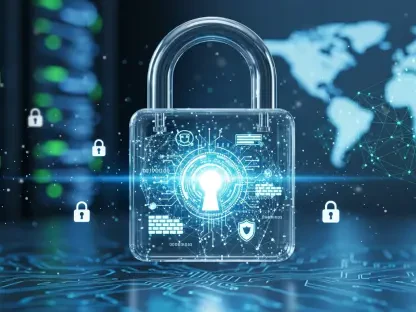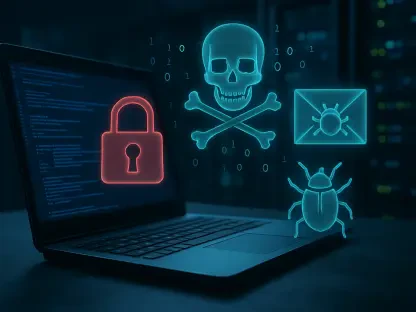Your system’s vulnerability to cyber threats is a growing concern in today’s highly interconnected world. With attackers continuously evolving their strategies, keeping up with cybersecurity measures is essential. This detailed article explores various aspects of system vulnerabilities, the nature of emerging threats, and the most effective strategies to fortify defenses against them.
The Changing Cyber Threat Landscape
Modern cyber threats are becoming increasingly sophisticated. From zero-day exploits to AI-driven malware, attackers are constantly finding new ways to breach systems. Advanced techniques infiltrate through unforeseen channels, bypassing traditional security measures designed to safeguard networks and data. Understanding these complex tactics is critical for the development of robust defense mechanisms capable of mitigating such threats.
The cyber landscape is not static; it evolves with technological advancements. Attackers leverage machine learning and AI to create more effective malware, able to adapt and change based on the defenses they encounter. Consequently, cybersecurity strategies must also evolve. Staying updated with the latest trends and developments is a step towards fortifying defenses against these ever-changing threats. Education and awareness about modern cyber strategies and tactics are vital in forming a defensive shield against sophisticated attackers.
Common Vulnerabilities
Systems are often exposed to vulnerabilities due to outdated software. Ensuring regular updates and patches can significantly reduce the risk, as they address security flaws discovered after the software’s initial release. Additionally, weak passwords and poor authentication practices provide another common point of entry for attackers. Implementing strong password policies, combined with multi-factor authentication, robustly fortifies security against unauthorized access.
Another prevalent vulnerability stems from improper management of access controls. Insufficient monitoring of user permissions can inadvertently give attackers avenues to exploit system weaknesses. Regular audits and review processes are essential to maintain strong access control measures. Addressing common vulnerabilities with proactive strategies and continual assessment can drastically improve system security.
Zero-Day Exploits
A zero-day exploit targets previously unknown vulnerabilities, presenting a significant danger as there are no existing defenses ready to counteract these exploits. Such threats can violently compromise systems, with attackers exploiting flaws before they are identified and patched. Advanced monitoring tools and proactive threat intelligence efforts are required to detect and respond to zero-day exploits effectively.
The nature of zero-day vulnerabilities means that security teams must constantly be on high alert, utilizing tools that can heuristically identify unusual activities indicative of such exploits. Collaboration with cybersecurity research organizations for sharing intelligence and gaining insights into potential vulnerabilities can enhance the overall readiness against zero-day threats. Swift response mechanisms are imperative to mitigate the potential damage caused by these unpredictable exploits.
Ransomware Attacks
Ransomware remains one of the most pervasive and damaging threats in the cybersecurity landscape. Attackers infiltrate systems, encrypt critical data, and demand ransom payments for its release. The impact of ransomware attacks can be devastating, leading to substantial data loss and financial costs. Investing in regular backups ensures that data can be restored without succumbing to ransom demands.
A robust incident response plan is essential in mitigating the effects of ransomware attacks. Preparedness involves not only ensuring quick recovery of data but also having protocols in place to contain and eradicate the ransomware from the system. Training personnel on the early detection signs of ransomware and establishing a clear communication line for reporting suspicious activities form a critical part of the preventative strategy against this persistent threat.
Phishing and Social Engineering
Phishing and social engineering attacks manipulate individuals into revealing sensitive information, exploiting human behavior rather than technical weaknesses. These attacks are executed through deceptive emails or websites designed to gather personal credentials. Training employees and raising awareness about phishing schemes can significantly reduce the risk of these attacks, promoting a security-conscious culture within the organization.
Regular simulated phishing exercises can help reinforce the importance of recognizing and correctly handling phishing attempts. Developing stringent verification processes for sensitive transactions and continuous monitoring of internal communications help in early identification and mitigation of social engineering attacks. Integrating multi-layered security measures can deflect many such attempts, emphasizing the importance of human vigilance in combating these threats.
Advanced Persistent Threats (APTs)
Advanced Persistent Threats (APTs) are stealthy and prolonged attacks by sophisticated adversaries. These attackers aim to infiltrate networks and remain undetected for extended periods, often for the purpose of gathering data or sabotaging operations. Implementing thorough network monitoring and anomaly detection systems is crucial in uncovering APTs. These sophisticated threats necessitate a multifaceted approach to detection and defense.
APTs employ diverse techniques, including installing malware that avoids detection, exploiting vulnerabilities, and hijacking legitimate tools to infiltrate systems. Security teams must use comprehensive methods like behavioral analysis and machine learning to detect unusual patterns indicative of APT presence. Regular updates to threat intelligence databases and employing strategies like red teaming can enhance an organization’s preparedness and response to these covert attacks.
The Role of Artificial Intelligence
Artificial Intelligence (AI) is a double-edged sword in cybersecurity. While it aids in detecting threats through advanced analytics and automation, attackers also use AI to create more sophisticated malware capable of evading traditional security measures. Balancing AI-powered security solutions and understanding their limitations is essential for effective defense. Properly leveraging AI can bolster security defenses, but it must be complemented with human oversight and judgment.
The deployment of AI in cybersecurity encompasses automated threat detection, response optimization, and predictive analysis. However, attackers can utilize similar technology to develop AI-driven attacks. Continuous evaluation and improvement of AI models based on emerging threats are critical in maintaining effective security defenses. Collaboration among cybersecurity experts and AI researchers can close the gap between attacker and defender capabilities, leveraging AI to its full potential while mitigating risks associated with its misuse.
The Importance of Code and Cloud Security
Securing code repositories and cloud environments is critical in preventing breaches. Exposed API keys and access tokens in public code repositories pose significant vulnerabilities. Regular audits and implementing strict security protocols for code management can strengthen cloud security. Ensuring that development pipelines are fortified with robust security measures is imperative to maintaining secure application environments.
The rise of cloud-native applications demands a heightened focus on securing cloud infrastructure. Vulnerabilities in code can propagate quickly within these environments, making it essential to manage and secure code from the outset. Using automated tools for code scanning and implementing secure coding guidelines can minimize risks. Secure cloud architecture practices, including encryption and zero-trust models, form the backbone of cloud security strategies focused on mitigating the potential exposure of sensitive data.
Security Flaws in Trusted Tools
Even trusted security tools can have vulnerabilities, as evidenced by exploits targeting antivirus software or VPNs. This reality underscores the importance of ongoing vigilance and regular updates and patches for security tools. It is vital to maintain an updated knowledge base on potential vulnerabilities within trusted tools to preemptively address and mitigate risks. Vigilance and regular maintenance ensure these defensive tools remain reliable and effective.
Moreover, the increasing complexity of security tools necessitates a thorough understanding of their operational intricacies, ensuring they are deployed and configured correctly. Regular penetration testing and security reviews can uncover latent vulnerabilities, prompting timely remediation and updates. Security teams must work closely with vendors to stay informed about patches and updates while conducting independent reviews to affirm the integrity and security of these tools.
The Threat of Unauthorized Access
Unauthorized access through brute-force attacks or weak access controls remains a prevalent issue. Attackers often exploit weak authentication mechanisms to gain unauthorized entry into systems. Strengthening access control measures, such as employing multi-factor authentication and monitoring for unusual login attempts, can protect against unauthorized access. Proactive measures in securing access points are paramount in guarding against such intrusions.
Integrating advanced authentication methods, including biometric validation and contextual access controls, can fortify security. Additionally, periodic review and auditing of access controls help in identifying and resolving potential weaknesses before they are exploited. Implementing robust logging and alerting mechanisms allows for early detection and swift action against unauthorized access attempts, ensuring the safeguarding of critical systems and data.
Trends in Cyber Sophistication
Cyber attacks are not only increasing in frequency but also in sophistication. Attackers constantly refine their methods, employing advanced technologies and novel strategies to exploit vulnerabilities. Understanding current trends in cybersecurity helps in anticipating future threats and guiding preparedness efforts. Staying informed about the latest developments in cyber threats is crucial to enhancing security postures and forming robust defensive measures.
The fusion of disparate technologies and tactics in cyber attacks demands an integrated approach to cybersecurity. By analyzing trends and understanding the evolving threat landscape, security teams can develop proactive strategies encompassing both technological and human factors. Continuous education, threat intelligence sharing, and adopting industry best practices are essential elements in combating the rising sophistication of cyber threats. The dynamic nature of cyber threats necessitates adaptive and forward-thinking security strategies.
Indicators of Network Compromise
Identifying indicators of network compromise, such as unusual network traffic or unexpected account activations, can prompt early intervention. Real-time network monitoring and alert systems are critical for detecting compromises. Proactive measures, like employing anomaly detection tools and ensuring robust logging capabilities, help in swiftly identifying and mitigating risks. Vigilant monitoring and prompt responses form the first line of defense against network compromises.
Indicators of network compromise can often be subtle, requiring advanced tools and trained analysts to identify. Implementing comprehensive security protocols, including network segmentation and endpoint protection, can limit the spread and impact of compromised systems. Regular drills and audits help in preparing for potential network breaches, ensuring that security measures are effective and up-to-date. Swift containment and remediation practices are paramount in minimizing the damage and restoring network integrity.
Cybersecurity for Enterprise Networks
Enterprise networks are particularly vulnerable due to their scale and complexity. Securing routers and other network devices is essential, as these are critical entry points for attackers. Comprehensive security measures throughout the network infrastructure help mitigate risks, ensuring that vulnerabilities in one segment do not compromise the whole system. Effective network security requires a holistic approach encompassing all components of the enterprise architecture.
Deploying advanced security solutions, like intrusion detection systems and robust firewall configurations, forms the backbone of secure enterprise networks. Regular updates, stringent access controls, and continuous monitoring ensure that weak points are identified and addressed promptly. Educating network administrators and personnel about potential threats and security protocols is crucial in maintaining a resilient network environment. Safeguarding critical data and ensuring the integrity of communications within enterprise networks are vital components of comprehensive cybersecurity strategies.
AI-Driven Fraud and Scams
AI-driven fraud schemes, including investment scams, exploit deepfake technology to deceive victims with credible-looking fake personas. These sophisticated scams pose significant challenges as they leverage advanced AI capabilities to manipulate perceptions and exploit trust. Educating the public about the dangers of deepfake technology and deploying AI-based detection tools can tackle the growing threat of AI-driven fraud, enhancing public awareness and forming defensive measures against these scams.
Financial institutions and law enforcement agencies must collaborate to identify and disrupt AI-driven fraud networks. Developing sophisticated detection algorithms capable of recognizing deepfake indicators can help in mitigating these threats. Continuous monitoring of online activities and establishing frameworks for reporting suspicious transactions are pivotal in combating AI-driven fraud schemes. The growing prevalence of such scams necessitates robust preventive and detective measures to safeguard victims.
Government and Regulatory Responses
Government agencies are increasingly focused on cybersecurity regulations, aiming to protect sensitive data and ensure robust security practices within organizations. Compliance with these regulations helps protect sensitive data, forming a legal and operational framework for cybersecurity. Understanding and adhering to regulatory requirements is vital for maintaining strong cybersecurity practices, ensuring that organizations meet mandated standards and protocols.
Regulations often require ongoing audits, reporting, and certifications to ensure compliance. Organizations must develop strategies to integrate these requirements seamlessly into their cybersecurity practices, promoting a culture of compliance and vigilance. Collaboration with regulatory bodies can provide insights into emerging threats and assist in shaping effective defense mechanisms. Staying informed about regulatory changes and updates is crucial in maintaining compliance and enhancing overall security.
Enhancing Cyber Resilience
Building cyber resilience involves preparing for, responding to, and recovering from cyber threats, ensuring minimal disruption in the event of an attack. Developing a comprehensive resilience strategy encompasses preventive measures, rapid response protocols, and recovery plans. Cyber resilience is an organizational strategy aimed at maintaining operational continuity and safeguarding critical assets during and after a cyber incident.
A detailed cyber resilience plan includes regular drills, clear communication channels, and predefined recovery steps to ensure swift and effective responses to cyber threats. Investing in technologies and training programs that enhance detection and response capabilities forms a critical component of a resilient cyber strategy. Learning from past incidents and continuously improving resilience measures ensures that organizations are well-prepared to tackle future threats.
Participating in Cybersecurity Awareness
In today’s digital age, participating in cybersecurity awareness is crucial for individuals and organizations alike. Taking proactive steps to understand the potential threats and practicing safe online behaviors can significantly reduce the risk of cyberattacks. Through education and awareness, we can better protect our personal information and maintain the security of our digital environments.
Engaging in cybersecurity awareness campaigns and training programs fosters a culture of security within organizations. Continual education about emerging threats and best practices equips personnel with the knowledge to recognize and address potential cyber risks. Proactive engagement with cybersecurity initiatives enhances the overall hygiene within the organization, forming a robust defensive posture against cyber threats.
Organizing regular workshops, simulations, and awareness programs instills a security-conscious mindset among employees. Collaboration with cybersecurity experts and institutions provides deeper insights into effective practices and the latest threat intelligence. Promoting a culture of vigilance and readiness is fundamental in sustaining a resilient organizational environment, minimizing the risk of successful cyberattacks through informed and proactive actions.
Tools and Technologies for Defense
Various tools and technologies, such as malware sandboxes and vulnerability scanners, play a crucial role in defending against cyber threats. Investing in cutting-edge security solutions and regularly updating them provides a strong defense mechanism capable of identifying and mitigating risks before they escalate. Advanced tools enhance the capabilities of security teams, enabling them to proactively protect systems against emerging threats.
Selecting appropriate tools requires a thorough understanding of their functionalities and operational scope within the organization. Regular evaluation and updates ensure that these technologies remain effective against new and evolving threats. Integrating tools into a unified security framework optimizes their efficiency and enhances overall cyber defense. Leveraging technology in tandem with human expertise forms the backbone of robust security strategies.
Monitoring for Emerging Threats
Continuous monitoring for new and emerging threats is essential to stay ahead of attackers by adopting a proactive approach to threat intelligence and regularly assessing security posture. Advanced threat detection systems and regular updates to security protocols help in identifying and mitigating risks effectively. Proactive threat monitoring enables organizations to anticipate and prepare for potential attacks, strengthening their defensive strategies.
Implementing real-time monitoring tools and maintaining a vigilant security operations center are pivotal in detecting early indicators of emerging threats. Collaboration among cybersecurity professionals and sharing threat intelligence across the industry enhance preparedness. Regular security assessments and audits provide a comprehensive understanding of organizational vulnerabilities, enabling timely and effective mitigation strategies to fortify defenses against emerging cyber threats.
Conclusion
In today’s highly interconnected world, the vulnerability of your system to cyber threats is a mounting concern. Attackers are continually evolving their tactics, making it crucial to stay current with cybersecurity measures. This comprehensive article delves into various facets of system vulnerabilities, examines the nature of emerging threats, and discusses the most effective strategies to strengthen defenses against them.
Understanding system vulnerabilities starts with recognizing that no system is entirely immune to cyber threats. Attackers frequently identify and exploit weaknesses in software, networks, and human habits. Emerging threats like ransomware, phishing, and zero-day exploits highlight the dynamic and sophisticated nature of cyberattacks, requiring constant vigilance and adaptation.
One of the most effective strategies to protect against these threats involves adopting a multi-layered defense approach. This includes using advanced firewalls, intrusion detection systems, and robust antivirus software. Regular updates and patches are crucial to mitigating vulnerabilities and ensuring software is up to date. Additionally, educating employees about safe online practices and potential threats can significantly reduce the human risk factor.
Ultimately, staying informed about the latest cybersecurity trends and continually improving your defensive measures is the best way to protect your system from the ever-evolving landscape of cyber threats.









